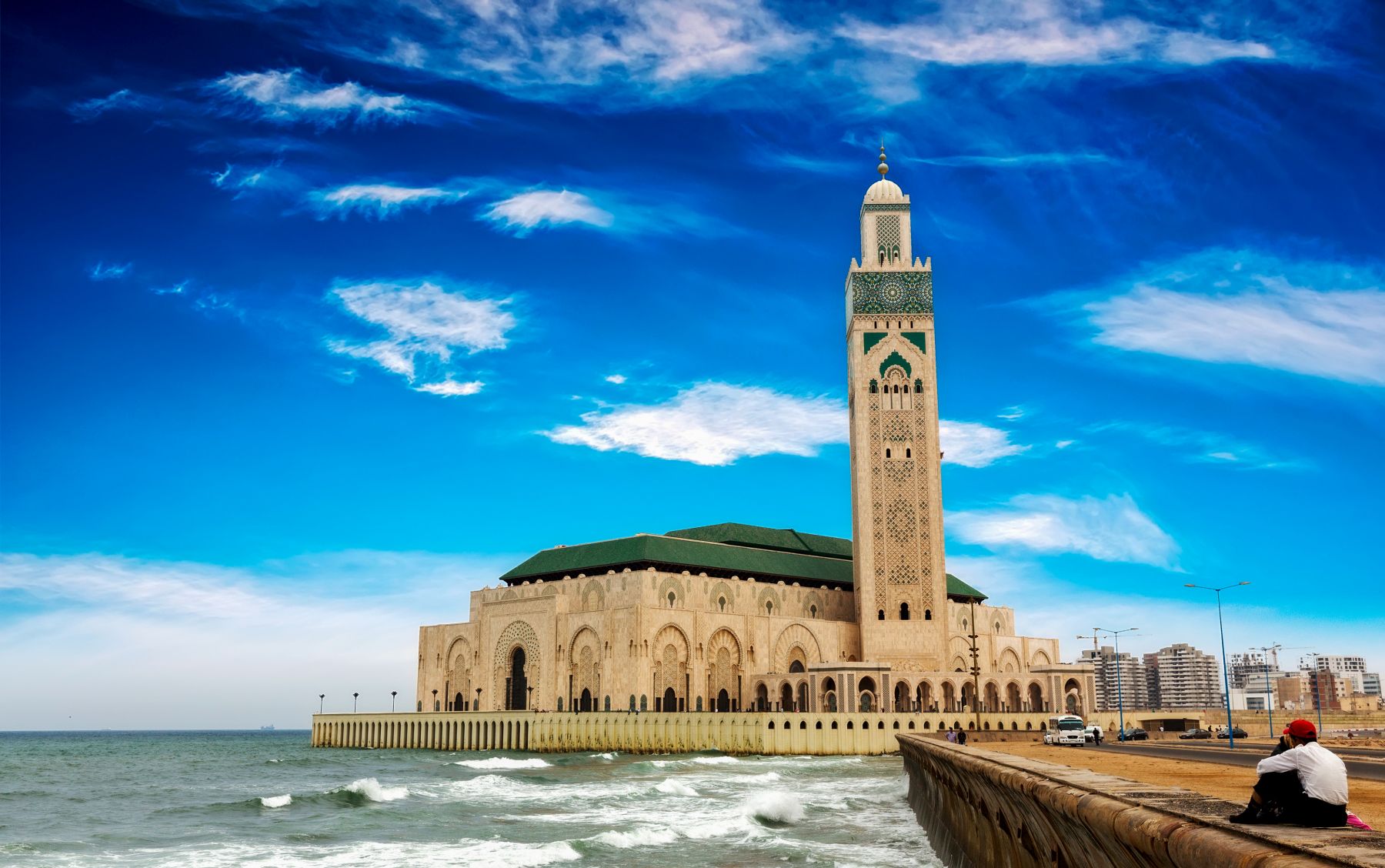



Casablanca is a port city and commercial hub in western Morocco, fronting the Atlantic Ocean. The city's French colonial legacy is seen in its downtown Mauresque architecture, a blend of Moorish style and European art deco. Standing partly over the water, the enormous Hassan II Mosque, completed in 1993, has a 210m minaret topped with lasers directed toward Mecca. ― Google
Postal code: 20000-20200
Area: 384 km²
Demonym(s): Casablancan; Kazāwi (كازاوي); Biḍāwi (بيضاوي); casablancais
Elevation: 0 to 150 m (0 to 492 ft)
First settled: 7th century BC
Founded by: Mohammed III
Region: Casablanca-Settat
Spring (March to May) and Fall (September to November) are the most comfortable times to visit with mild weather.
Summer (June–August) can get hot, but the city’s coastal location makes it bearable with ocean breezes.
Winter (December–February) is mild but can be rainy.
By Air:
Fly into Mohammed V International Airport (CMN) — it’s the primary gateway to Morocco and is well-connected to major cities worldwide.
By Train:
Casablanca is accessible by ONCF trains from Rabat, Marrakech, Fès, and Tangier.
By Car or Bus:
Casablanca is easy to reach by highway, and buses from CTM or Supratours offer convenient service from most Moroccan cities.
Hassan II Mosque
One of the largest mosques in the world and an architectural masterpiece located right on the oceanfront. Visitors can tour the mosque and enjoy views of its grand minaret (the tallest in the world).
The Corniche
A lively area along the coast with beaches, restaurants, and cafes. Perfect for a stroll or sunset views.
Royal Palace of Casablanca
Though not open to the public, the Royal Palace and its surrounding gardens are impressive and worth admiring from the outside.
Rick’s Café
Inspired by the classic movie Casablanca, it’s a charming café where you can enjoy a meal or drink while soaking in the movie nostalgia.
The Old Medina
A more compact and less chaotic version of the medinas in cities like Fès and Marrakech. Explore the narrow streets and small shops selling crafts, leather goods, and spices.
Mohammed V Square
Casablanca’s central square, surrounded by French colonial architecture and a great spot to start your exploration of the city.
Villa des Arts
A beautiful modern art museum that showcases contemporary Moroccan artists in a striking building.
Habous Quarter
A charming district with a blend of French colonial and traditional Moroccan architecture. It’s great for shopping and finding unique crafts.
The Anfa District
Known for its upscale shopping, modern architecture, and beautiful beachside views.
Take a walking tour of the Old Medina and explore the small alleyways and local markets.
Visit the Hassan II Mosque, one of the most iconic landmarks in Morocco.
Stroll along the Corniche for stunning ocean views, beach relaxation, or dining by the sea.
Try local street food like briouats (savory pastries) or brochettes (grilled skewers).
Catch a show at the Casablanca Opera House if you're into performing arts.
Spend a day at the beach – head to Ain Diab for a mix of beach clubs and family-friendly spots.
Luxury:
Four Seasons Hotel Casablanca, Hyatt Regency Casablanca – luxurious stays offering great views and excellent amenities.
Mid-Range:
Ramada by Wyndham Casablanca, Mövenpick Hotel Casablanca – comfortable, well-located options.
Budget:
Hotel Central, Ibis Casablanca City Center – affordable and centrally located.
Seafood: Casablanca’s coastal location makes it famous for fresh seafood.
Couscous and tagine – classic Moroccan dishes.
Pastilla – a sweet-savory pastry often filled with pigeon or chicken.
Briouats – small savory pastries.
Mint tea – the traditional Moroccan drink served throughout the city.
Rick’s Café – A nostalgic, stylish café offering Moroccan and international dishes.
La Sqala – A beautiful garden restaurant offering traditional Moroccan cuisine.
Le Relais de Paris – Known for its French fare and great service.
Fish Town – For the freshest seafood in the city, perfect for a casual meal by the beach.
Dar Beida – A local favorite for traditional Moroccan dishes.
Languages: Arabic and French are widely spoken, with English more commonly understood in tourist areas.
Dress Code: Casablanca is a cosmopolitan city, but dressing modestly is still recommended, especially when visiting religious sites.
Vibe: Fast-paced, modern, and lively with a blend of Moroccan tradition and European influence from the French colonial era.
Shopping: Expect a mix of high-end boutiques in the city center and traditional markets in the Old Medina and Habous Quarter.